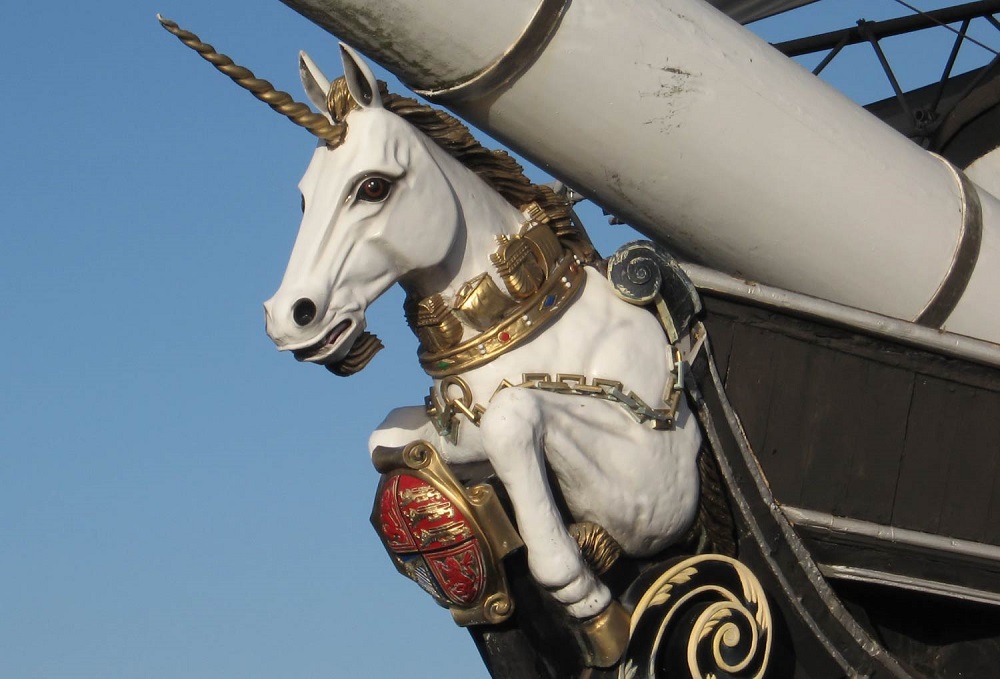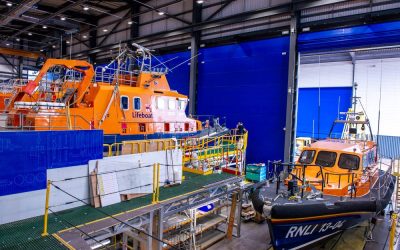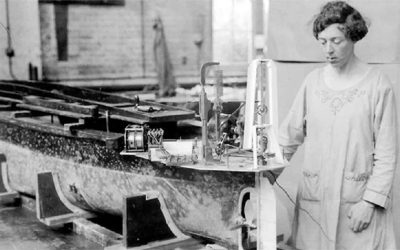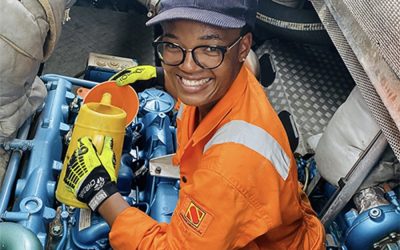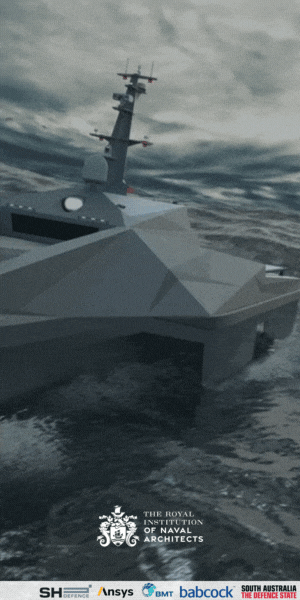By Mark Barton, RINA Historian
This year sees two hundred years of life afloat for what is the most original old ship in the world, HMS Unicorn. Now a museum in Dundee, she was a 46-gun frigate, designed by Sir Robert Seppings. Built as the changeover started she combines the traditional wooden craftsmanship of the 18th century and the emerging iron technology of the 19th century. This later being an aspect Seppings championed. Her early examples of ironwork including diagonal bracing straps through the hull and iron knees supporting the decks. Her elliptical stern – another innovation of Seppings – is the only example left in the world and provided a greater arc of fire astern. Despite the use of iron she still required around 1,000 oak trees to build her. She cost over £26,500 and was designed to have 300 crew.
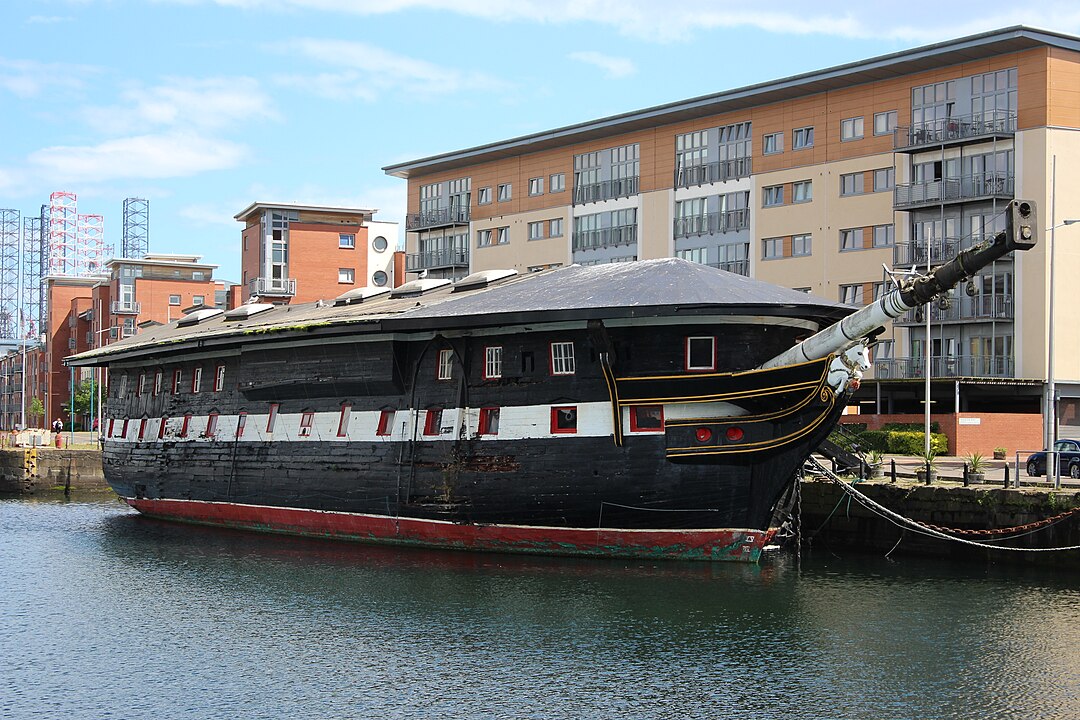
Source: Mariusz Matuszewski/Creative Commons
HMS Unicorn was ordered in 1817, however, construction did not begin until February 1822 when her keel was laid down on Slipway No. 4 at Chatham Dockyard. The ship was launched into the Medway on 30th March 1824. Although built for war, Unicorn spent her early life in reserve or ‘ordinary’ anchored on the River Medway. Here she formed part of Britain’s naval force if a fleet in being, helping to maintain the ‘Pax Britannica’ or ‘British Peace’ of the 19th century. It was during this time that the Royal Navy added her distinctive roof which while repaired remains. It is a result of this protective covering, that Unicorn has remained the most original of all the world’s historic ships, as her timbers were far better protected.
During the 1860s Unicorn’s potential use as a fighting ship drew to an end as Ironclads became established. However, like many others, she was given a new role. In 1873 she began her new life as a training ship for the Royal Naval Reserves in Dundee, a role she spent almost 100 years in. In this time thousands trained on board, including over 1,500 from the Women’s Royal Naval Service (WRNS) and hundreds of her recruits were drafted into the Royal Naval Division at the outbreak of World War 1 to fight ashore in France.
She remained a Reserve Training Centre until the 1960s, when the Admiralty decided to scrapping her. However, in 1968, when she had closed as a training centre for the Reserves, she was transferred to the Unicorn Preservation Society in order to preserve her for future generations.
